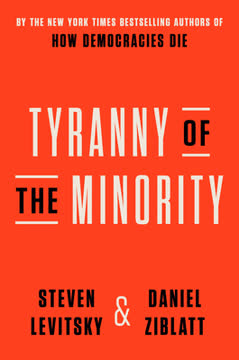اہم نکات
1. جدید سیکولرزم نے روحانی تجربات کو تبدیل کر دیا ہے
"اٹھارہویں صدی کے آخر تک، بہت سے روشنی کے دور کے دانشوروں کے لیے، یہ منطقی خالق دیزم کا دور دراز خدا بن چکا تھا، جسے عقل، سائنس، اور قدرت کے مطالعے کے ذریعے جانا جا سکتا تھا۔"
نظریات کی تبدیلی۔ مذہبی سے سیکولر نظریات کی طرف منتقلی نے انسانوں کی روحانیت کو سمجھنے کے طریقے میں نمایاں تبدیلی پیدا کی ہے۔ یہ تبدیلی تاریخی جڑوں کی حامل ہے، جو پروٹسٹنٹ اصلاحات سے شروع ہوئی اور روشنی کے دور کے ذریعے زور پکڑتی گئی۔
سیکولرائزیشن کی اہم خصوصیات:
- خارجی اشیاء سے روحانی طاقت کا خاتمہ
- معنی اور اہمیت کا انفرادی انسانی ذہنوں کی طرف منتقل ہونا
- روایتی مذہبی اداروں کے بارے میں بڑھتا ہوا شکوک
- سائنسی مادیات کی بڑھتی ہوئی قبولیت
فلسفیانہ مضمرات۔ سیکولر تبدیلی صرف مذہبی عقیدے میں کمی کی نمائندگی نہیں کرتی؛ یہ انسانی تجربے کو بنیادی طور پر نئے سرے سے تشکیل دیتی ہے۔ جبکہ روایتی معاشرے روحانی تعلقات کو روزمرہ زندگی میں ذاتی سمجھتے تھے، جدید سیکولر نقطہ نظر اکثر روحانیت کو اختیاری یا یہاں تک کہ غیر ضروری سمجھتے ہیں۔
2. روحانی مشقیں مذہبی سرحدوں سے آگے بڑھتی ہیں
"زیادہ تر روحانی مشقوں کا فائدہ یہ ہے کہ یہ عقیدے کے بجائے عمل کے بارے میں ہیں۔ اس لیے یہ مذہبی اور غیر مذہبی دونوں لوگوں کے لیے کھلی ہیں۔ یہ شمولیتی ہیں۔"
عالمی مشقیں۔ روحانی مشقیں جیسے مراقبہ، شکرگزاری، اور ذہن سازی مخصوص مذہبی روایات تک محدود نہیں ہیں۔ یہ مختلف پس منظر کے افراد، بشمول ملحدین، اجنبیوں، اور روحانیت کی تلاش کرنے والوں کے ذریعے کی جا سکتی ہیں۔
ثقافتی مشترکات:
- ہندو اور بدھ مت کی روایات سے مراقبہ کی تکنیکیں
- مختلف ثقافتوں میں شکرگزاری کی مشقیں
- قدرت کے ساتھ جڑنا ایک روحانی تجربہ
- کمیونٹی اور اجتماعی تجربے کے رسومات
شمولیتی نقطہ نظر۔ عقیدتی نظریات کے بجائے تجرباتی مشقوں پر توجہ مرکوز کر کے، یہ روحانی تکنیکیں مختلف نظریات کے درمیان ایک پل فراہم کرتی ہیں، افراد کو روایتی مذہبی ڈھانچوں سے آگے شعور اور تعلق کی تلاش کی اجازت دیتی ہیں۔
3. مراقبہ دماغ سے آگے شعور کے دروازے کھولتا ہے
"مراقبہ کے ذریعے، ہم ایک زیادہ شمولیتی شعور کی طرف پیچھے ہٹ سکتے ہیں۔ اور کبھی کبھی ہم اپنے سے کہیں زیادہ وسیع ذہن کی موجودگی میں خود کو پاتے ہیں۔"
شعور کی توسیع۔ مراقبہ صرف ایک آرام دہ تکنیک نہیں ہے بلکہ شعور کی تلاش کا ایک گہرا طریقہ ہے۔ یہ مشق کرنے والوں کو ذہنی عمل کا مشاہدہ کرنے اور ممکنہ طور پر انفرادی دماغ کی سرگرمی سے آگے کے شعور کی حالتوں تک رسائی حاصل کرنے کی اجازت دیتا ہے۔
عصبی بصیرت:
- مراقبہ کے دوران دماغ کی سرگرمی میں تبدیلیاں
- مخصوص دماغی علاقوں میں سرمئی مادے میں اضافہ
- ڈیفالٹ موڈ نیٹ ورک کی سرگرمی میں کمی
- متعالی حالتوں کا تجربہ کرنے کی صلاحیت
سائنسی اور روحانی نقطہ نظر۔ جبکہ مادی سائنسدان مراقبہ کو دماغ کی سرگرمی کے طور پر دیکھتے ہیں، بہت سی روایات اسے بڑے، انسان سے زیادہ شعور کے ساتھ جڑنے کا ایک راستہ سمجھتی ہیں۔ یہ مشق سائنسی مشاہدے اور روحانی تلاش کے درمیان پل فراہم کرتی ہے۔
4. شکرگزاری ہمیں زندگی کے بڑے بہاؤ سے جوڑتی ہے
"شکر گزار ہونا ہمیں اس باہمی، زندگی کو بڑھانے والے بہاؤ کا حصہ بناتا ہے۔ بے شکر ہونا ہمیں اس سے الگ کر دیتا ہے۔"
شکرگزاری کی تبدیلی کی طاقت۔ شکرگزاری کا اظہار صرف ایک سماجی نرمی نہیں ہے بلکہ ایک گہری روحانی مشق ہے جو افراد کو باہمی تعلق کے وسیع احساس سے جوڑتی ہے۔ شکرگزاری انفرادی تنہائی سے اجتماعی شرکت کی طرف نقطہ نظر کو تبدیل کرتی ہے۔
نفسیاتی اور جسمانی فوائد:
- خوشی اور زندگی کی تسکین میں اضافہ
- افسردگی اور اضطراب میں کمی
- سماجی تعلقات میں بہتری
- مجموعی طور پر صحت میں بہتری
وجودی نقطہ نظر۔ شکرگزاری ذاتی تعاملات سے آگے بڑھ کر انسانی وجود کی حمایت کرنے والے پیچیدہ نظاموں کو تسلیم کرتی ہے—مائیکروجنزم سے لے کر کہکشاؤں تک، ایک وسیع، باہمی جڑے ہوئے کائنات میں ہماری جگہ کو تسلیم کرتی ہے۔
آخری تازہ کاری:
FAQ
What's Science and Spiritual Practices about?
- Exploration of Practices: The book examines spiritual practices like meditation, gratitude, and rituals, focusing on their effects on health and consciousness.
- Science and Spirituality Integration: Rupert Sheldrake argues for a harmonious relationship between science and spirituality, suggesting they can enrich our understanding of existence.
- Personal Insights: The author shares personal experiences from exploring the intersections of science, spirituality, and nature.
Why should I read Science and Spiritual Practices?
- Holistic Perspective: The book offers insights into how spiritual practices can enhance well-being, supported by scientific research.
- Practical Advice: Readers receive guidance on incorporating spiritual practices into daily life, fostering deeper connections with themselves and the world.
- Challenge to Materialism: Sheldrake invites readers to consider alternative perspectives on consciousness, challenging the materialist worldview.
What are the key takeaways of Science and Spiritual Practices?
- Spiritual Practices' Benefits: Practices like meditation and gratitude can improve mental health and well-being, with measurable benefits such as reduced anxiety.
- Morphic Resonance: Sheldrake introduces this concept, suggesting memory is inherent in nature, influencing organisms through a collective memory.
- Nature Reconnection: The book emphasizes reconnecting with nature, advocating for a deeper appreciation of the environment for spiritual and physical health.
What are the best quotes from Science and Spiritual Practices and what do they mean?
- Exploration through Practices: "Spiritual practices help us to explore this question for ourselves," highlighting personal insights gained from spiritual engagement.
- Inclusivity of Practices: "All of them are open to Christians, Jews, Muslims, Hindus, Buddhists, animists, neo-shamans, people who are spiritual but not religious, New Agers, secular humanists, agnostics, and atheists," emphasizing the universal applicability of spiritual practices.
- Science and Religion Dichotomy: "The old-fashioned opposition between science and religion is a false dichotomy," suggesting that both can coexist and complement each other.
What is morphic resonance as defined in Science and Spiritual Practices?
- Memory in Nature: Morphic resonance posits that memory is inherent in nature, allowing organisms to draw upon a collective memory.
- Collective Influence: This concept suggests that learning and behavior are influenced by the experiences of previous generations.
- Controversial Idea: It challenges conventional scientific views on memory and learning, proposing a new understanding of organism-environment interactions.
How does meditation affect our health according to Science and Spiritual Practices?
- Stress Reduction: Meditation reduces stress levels, leading to lower blood pressure and improved mental health.
- Self-Awareness Enhancement: Regular practice increases self-knowledge and emotional awareness, aiding mental process control.
- Neuroplasticity Benefits: Studies show meditation can lead to structural brain changes, enhancing memory, emotional regulation, and attention.
What role does gratitude play in Science and Spiritual Practices?
- Emotional Well-Being: Gratitude is linked to increased happiness and life satisfaction, with grateful individuals experiencing better mental health.
- Social Connections: It fosters stronger social bonds and prosocial behavior, enhancing community ties.
- Mindset Shift: Gratitude shifts focus from entitlement to appreciation, helping individuals recognize life's positive aspects.
How does Sheldrake suggest we reconnect with the more-than-human world?
- Nature Immersion: Spending time in nature, observing interconnectedness, can be achieved through practices like forest bathing.
- Mindful Observation: Engaging with nature through mindful observation of plants and animals can lead to transformative experiences.
- Rituals and Practices: Incorporating nature-honoring rituals can help individuals feel more connected to the earth and its cycles.
What are some spiritual practices discussed in Science and Spiritual Practices?
- Meditation: Various forms, including mindfulness and mantra-based practices, are discussed for their mental and physical health benefits.
- Pilgrimages: The significance of pilgrimages in fostering spiritual growth and connection to sacred places is explored.
- Rituals: The role of rituals in connecting individuals to cultural heritage and collective memory is examined.
How does Science and Spiritual Practices address the relationship between science and spirituality?
- Complementary Perspectives: Sheldrake argues that science and spirituality can inform and enrich each other.
- Materialism Critique: The book critiques the materialist worldview, proposing a holistic understanding of consciousness.
- Experiential Knowledge: Emphasizes the importance of direct experience in both scientific and spiritual contexts.
What scientific evidence does Sheldrake provide in Science and Spiritual Practices?
- Rituals Research: Studies show rituals' positive effects on mental health, reducing anxiety and depression.
- Morphic Resonance Experiments: Experiments support morphic resonance, suggesting past experiences influence present behaviors.
- Health Benefits of Practices: Research indicates spiritual practices like meditation and gratitude improve immune function and reduce stress.
What practical advice does Sheldrake offer in Science and Spiritual Practices?
- Incorporating Rituals: Readers are encouraged to include rituals like singing and chanting in daily life for spiritual connection.
- Engaging with Nature: Spending time in nature is recommended to deepen spiritual practice and promote well-being.
- Practicing Gratitude: Emphasizes gratitude as a spiritual practice, enhancing connection to others and the universe.
جائزے
سائنس اور روحانی مشقیں کو مختلف آراء ملتی ہیں، جن کی درجہ بندی 1 سے 5 ستاروں تک ہے۔ مثبت آراء میں شیلیڈریک کے سائنس اور روحانیت کے درمیان پل بنانے کے طریقے کی تعریف کی گئی ہے، جسے بصیرت افروز اور سوچنے پر مجبور کرنے والا قرار دیا گیا ہے۔ ناقدین کا کہنا ہے کہ یہ کتاب سائنسی سختی کی کمی رکھتی ہے اور روحانی تصورات پر بہت زیادہ انحصار کرتی ہے۔ کچھ قارئین شیلیڈریک کی ایسی مشقوں کی تلاش کو سراہتے ہیں جیسے کہ مراقبہ، شکرگزاری، اور قدرت سے جڑنا، جبکہ دیگر اس مواد کو تکراری یا جانبدار سمجھتے ہیں۔ اس کتاب کی پذیرائی بڑی حد تک قارئین کی توقعات اور سائنسی سیاق و سباق میں روحانی خیالات کے لیے کھلے پن پر منحصر ہے۔
Similar Books

















